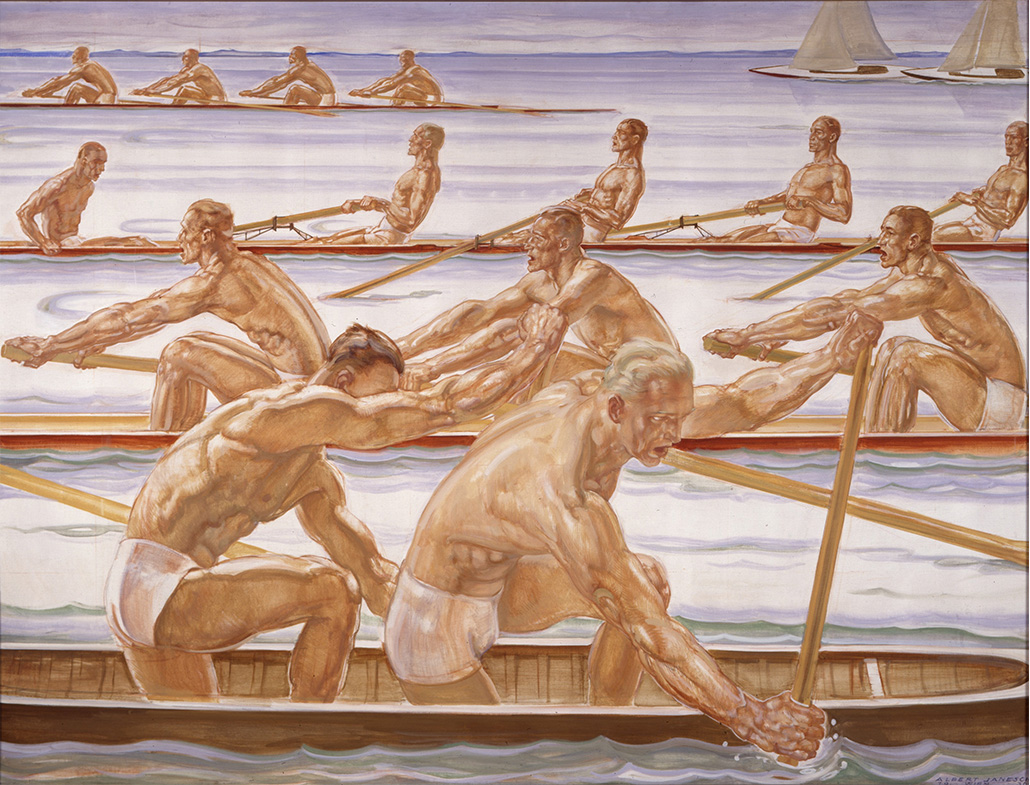
Art in the Third Reich at Museum Arnhem
Dec. 19, 2023
With the exhibition Art in the Third Reich – Seduction and Distraction Museum Arnhem turns its eye to a blind spot in art history. With about ninety works, it paints a picture of the art created and exhibited in Germany during the Nazi regime (1933-1945) and how it was turned into an instrument of political propaganda. This is the first time since 1944 that an art museum in the Netherlands is organising such a large exhibition about this fraught period in German art history.
It was an important moment for art in Nazi Germany: the opening of the Haus der Deutschen Kunst in Munich (now Haus der Kunst) with the first Große Deutsche Kunstausstellung (Great German Art Exhibition) and the infamous defamatory exhibition Entartete Kunst (Degenerate Art) in 1937. The former was organised annually from then on and was part of the propaganda used by the regime to persuade German society to adopt the ideology of National Socialism. One of the ways the Nazis did this was by polarising art movements.

Only classical art styles and realism were allowed. Modern art movements such as expressionism, cubism and abstraction were rejected, ridiculed and declared ‘degenerate’ by the regime. Also thematically, art, artists and art critics had to serve Nazi ideology, or at least not undermine it. Because of this far-reaching polarisation, the Nazi regime left its mark on art history even long after World War II was over. After the war, the roles reversed and realism was ‘cancelled’ because of its association with National Socialist cultural politics.
Art was used as an effective means of drawing the people to Nazi ideology, while also creating a diversion, keeping attention away from the regime’s criminal practices. Image-building at its most extreme, with great social impact. Printed materials such as exhibition catalogues, art magazines and postcards ensured constant popularisation of the exhibited works and inscribed them in the visual memory of an entire generation. The Great German Art Exhibitions were massively attended: in 1942, at the height of the war, 850,000 visitors made their way to the Haus der Deutschen Kunst to admire the contemporary artworks on display.
Although the Great German Art Exhibitions in Munich only featured limited overt propaganda, on 6,000 square metres they displayed an easily comprehensible worldview of the National Socialist regime: the concept of Heimat (Fatherland), the role of the family, labourers, landscapes, farmers and soldiers. They promoted a model that revolved around a romanticised representation of everyday life, of work and family and the heroization of a strong athletic ideal-body. A seemingly perfect world that had to visually captivate all ‘compatriots’ who would swear allegiance to the Nazi state and its ideals of strength, beauty and purity of the ‘Aryan’ people.
Besides these subtle forms of influence, there were also artworks unmistakably aimed at displaying power, war and Nazi propaganda. The exhibition Art in the Third Reich shows examples of this, such as some monumental works illustrating industrial progress, a cityscape with streets full of swastika banners and scenes of soldiers on the battlefield and advancing through conquered territory. A large painting by Adolf Reich, for instance, depicts a war-injured soldier; meant to glorify the sacrifice he made for the German nation.
Art in the Third Reich presents paintings and sculptures by artists such as Claus Bergen (1885-1964), Paul Mathias Padua (1903-1981), Ria Picco-Rückert (1900-1966), Adolf Reich (1887-1963), Ivo Saliger (1894-1987), Josef Thorak (1889-1952), Else Wex-Cleemann (1890-1978), Adolf Wissel (1894-1973) and Adolf Ziegler (1892-1959). One of the questions this exhibition poses is: did the artists support the regime, or did the regime support the artists?
The exhibition is on display until 24 March 2024 at Museum Arnhem.